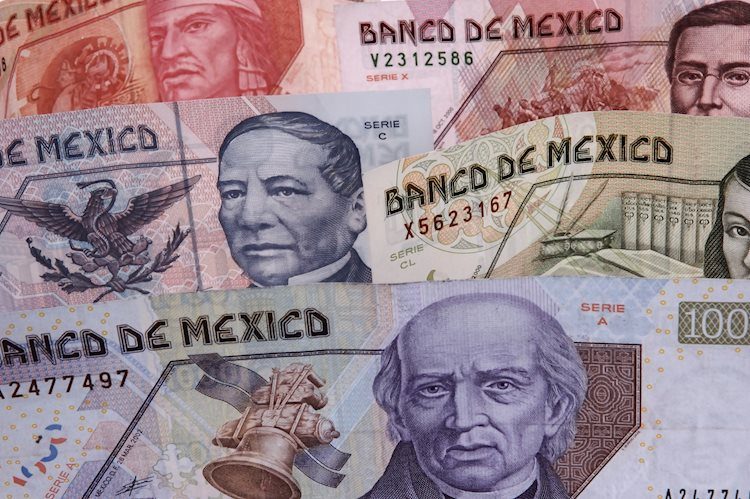The Mexican Peso faced depreciation against the US Dollar as the Mexican lower house voted and approved President AMLO’s bill to overhaul the judicial system. The bill, which has caused political turmoil, is now awaiting Senate approval. Despite concerns from foreign governments, international companies, and workers of the Mexican court system, the reform was approved in the Chamber of Deputies. The US Ambassador in Mexico warned that this reform could damage relations between Mexico and the United States.
As traders analyzed the latest US JOLTS report, the USD/MXN remained within a range of 19.67-19.92. The report indicated a decrease in job openings, leading to speculations that the US Federal Reserve might cut rates at the upcoming September meeting. Odds for a 50 bps Fed rate cut are at 43%, while for a quarter of a percentage point, it is 57%. The upcoming US economic docket includes the ADP National Employment Change, Initial Jobless Claims, S&P and ISM Services PMI data, and the Nonfarm Payrolls (NFP) report on Friday.
Mexico’s economic data released during the week showed a deceleration in the economy due to higher interest rates set by the Bank of Mexico. With the Unemployment Rate close to the 3% threshold and shrinking business activity in the manufacturing sectors, most banks expect Banxico to reduce rates by at least 50 bps for the remainder of 2024. The Mexican currency has already depreciated by 17.38% year-to-date. US economic data also included a drop in JOLTS Job Openings and a rise in Factory Orders, with positive expectations for Nonfarm Payrolls in August.
On the technical front, the USD/MXN strengthened as political developments unfolded, reaching a weekly high of 19.98. Traders began buying the Greenback as they ditched the Mexican Peso. The next levels to watch are the YTD high at 20.22, followed by daily highs from September 2022. If the USD/MXN weakens, the first support level is at 19.50, followed by a further drop towards the 50-day Simple Moving Average at 18.65.
The Bank of Mexico (Banxico) plays a crucial role in preserving the value of the Mexican Peso and setting monetary policy. By setting interest rates, Banxico aims to maintain low and stable inflation levels within its target range. The bank meets eight times a year and its decisions are influenced by the US Federal Reserve. Interest rate differentials with the USD play a significant role in determining the strength of the Mexican Peso. After the Covid-19 pandemic, Banxico took proactive measures to prevent significant depreciation of the MXN and stabilize the country amidst economic uncertainties.









